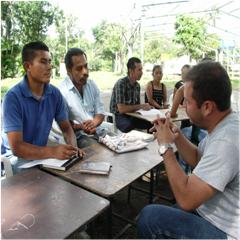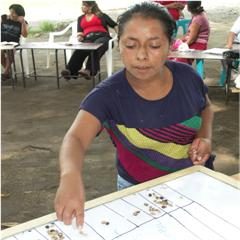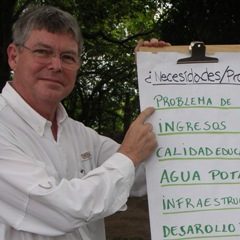Training for Individuals, Communities,
Nonprofits, & Local Governments
Become Adaptable and Resilient
Get road-tested, affordable, do-it-yourself solutions for a changing climate that YOU can launch NOW!
Start today with ‘8 Steps: Cut Your Carbon Footprint 50%.’
Online Learning: OL 241 Writing Your Indigenous Climate Action Plan: https://csd-i.org/climate-change/indigenous-climate-action-plan/
Center for Sustainable Development: https://csd-i.org/
Class Home Page 241 Indigenous Climate Action Plan
Download Class Documents:
Assignment One Discussion
Assignment One Homework
Magee Example Project Assignment 1
Chapter One. Community Needs Assessments and Project Outline.
Field Guide 10.1: Participatory Community Needs Assessments, Workshop Lesson Plan & Illustrations
‘A Field Guide to Community-Based Adaptation‘ by Tim Magee
This first week’s assignment will take longer than any of the assignments over the next 8 weeks. This is why you have three weeks for it. This gives you time to explore the online course structure and resources, to read the discussion, and to engage with a small group of community members who are concerned about climate change and would be willing to participate in a community needs assessment.
This assignment also has two components: a field component and a written component. I would suggest printing this assignment out by downloading it from Download Class Documents.
Download Field Guide 10.2 Summary of the Chapter One. Community Needs Assessments and Project Outline, the Field Guide 10.1: Participatory Community Needs Assessments, Workshop Lesson Plan & Illustrations, and the Magee Project Example from the Download Course Documents.
I would recommend role-playing the Lesson Plan with a colleague for practice. Make adaptations to the lesson plan that would be appropriate for your community situation and context.
Find a group of community members that either you or one of your community contacts already has a trusting relationship established with. Set up a 2 hour meeting with eight or 10 community members. Please try and meet with community members that represent the ultimate beneficiaries (mothers, fathers, families, farmers, ranchers – whoever describe the community you are working with). Try to avoid basing your assessment on a meeting exclusively with people in higher positions—such as tribal council members for example.
Work through the lesson plan with the group. I like to have an easel with large sheets of newsprint where I can quickly jot down ideas as they are voiced in the discussion. After the group has come up with a good set of needs/problems, let them have a short coffee break. I will take that 15 minutes to organize the list so that similar things are grouped together. I then like to take another sheet of newsprint on a table and draw a large rectangle with perhaps 12 smaller rectangles inside of it and then a simple description in each one that represents one of the needs/problems.



Then, have everyone leave the workshop area. Give each one of the participants 10 seeds, or beans, or small stones. Only one person should go into the workshop area at a time to use their seeds to vote on the needs. They should select the needs which THEY feel are the most important. It is their decision if they want to put all 10 seeds in one square or if they want to distribute them around several different problems.
After each workshop participant has had a chance to cast their votes, you can count the total seeds in each square and quickly write up a prioritized list ordered by the number of votes each problem received. This is a good time for the participants to have an open discussion about the results of the vote.
You should also make the determination if the prioritized list represents two or three unrelated projects such as some health needs and some agricultural challenges . If that is the case, organize the list so that health needs are in one place and agricultural challenges in another.
For the purposes of the course, I want you to develop a very simple, easily defined project. It would be a good idea to let the participants come to an agreement on which project should be attempted first. In our example above, you could ask them if they would prefer to work on the health component or the agricultural project first.
Follow the Magee Project Example exactly – it is what we are looking for. Pull it up on your screen and type right over it.
Go to Magee’s Example Project Assignment 1 to see what this could look like.
See you next week.
Copyright © Tim Magee